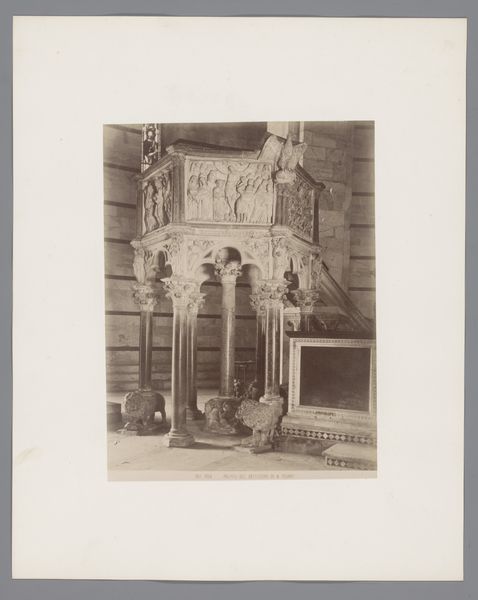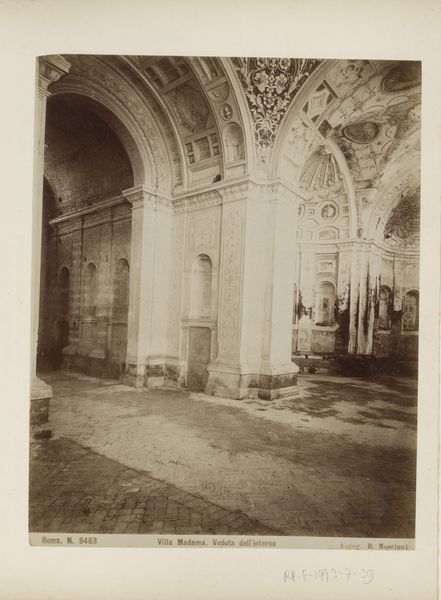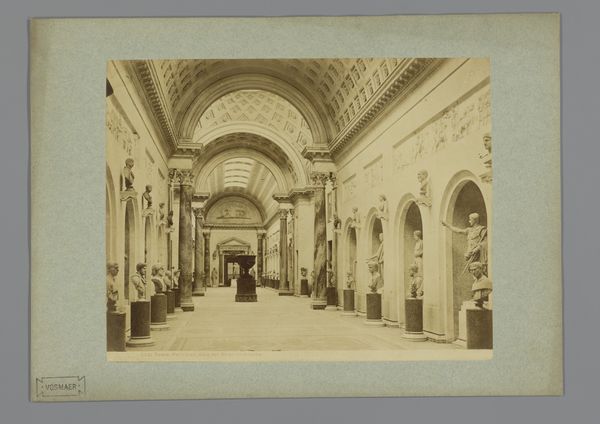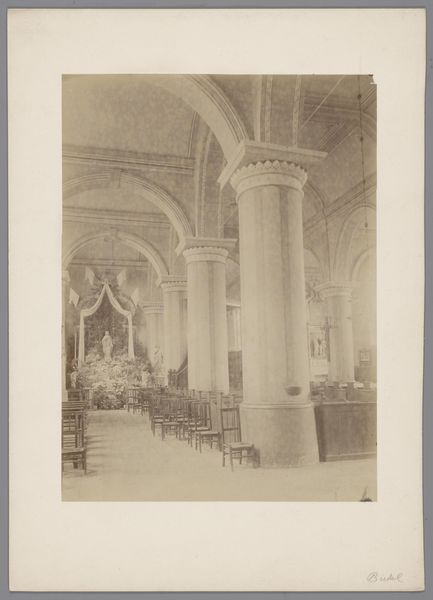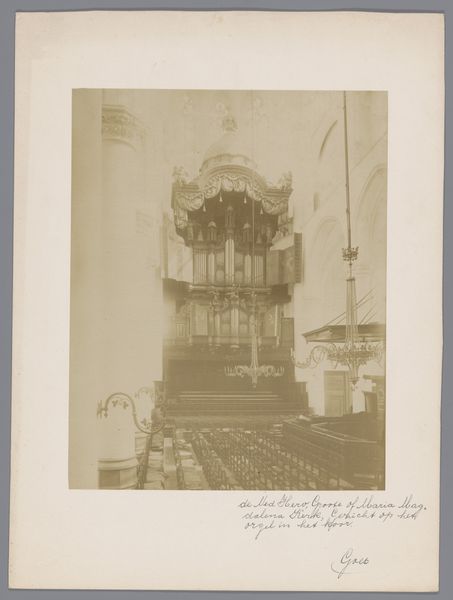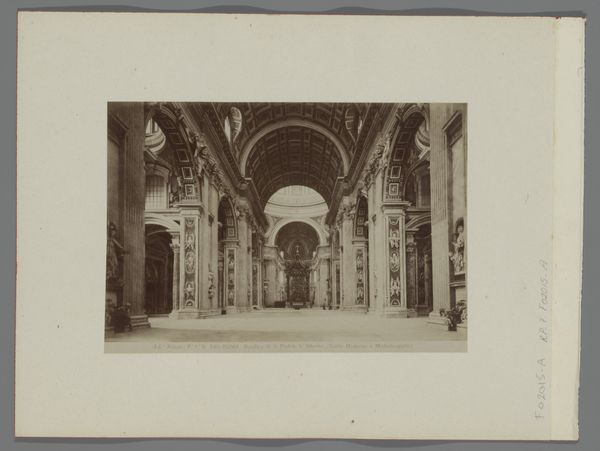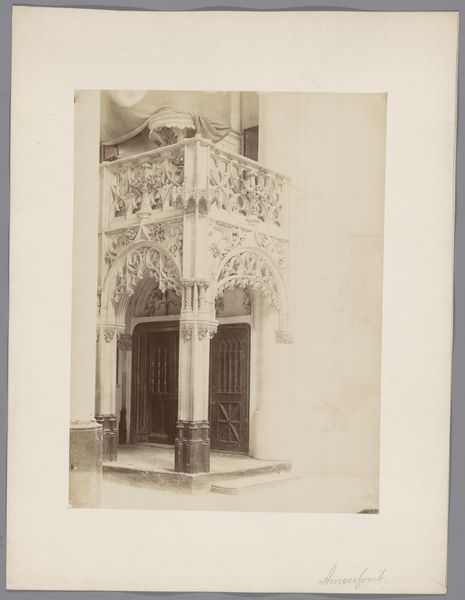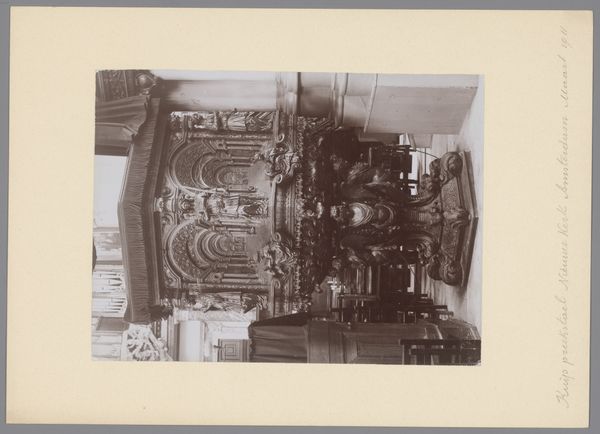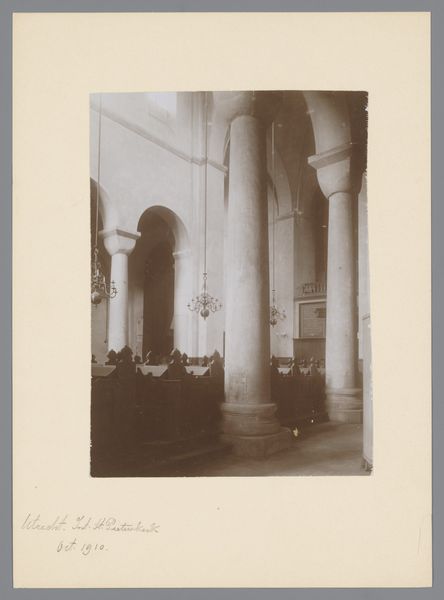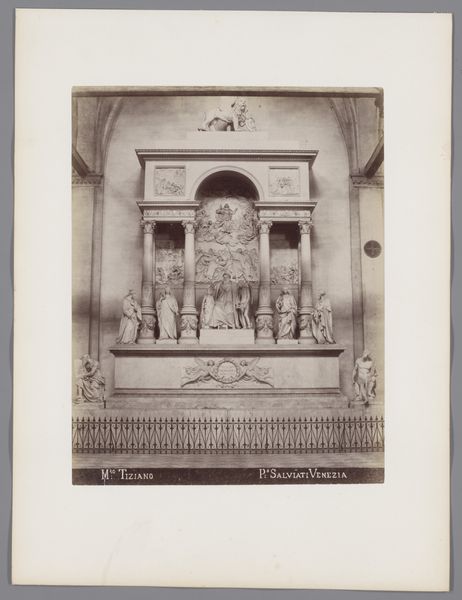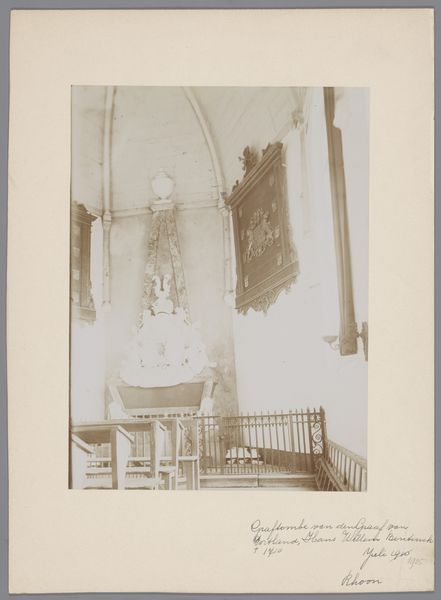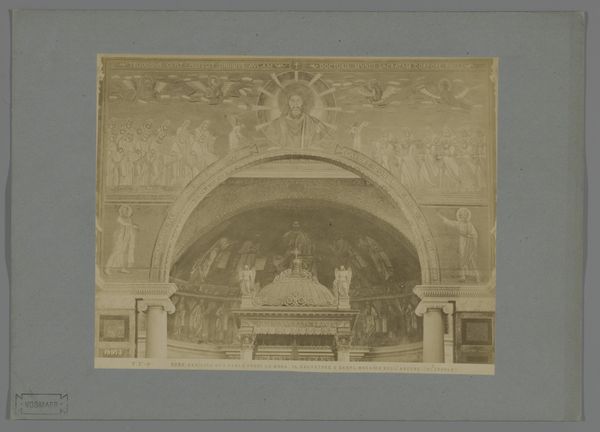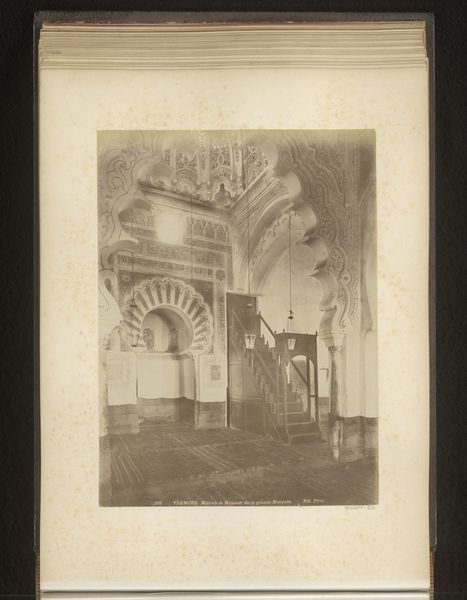
Gezicht op de ciborie van de Sint-Paulus buiten de Muren, omsloten door een baldakijn c. 1851 - 1900
0:00
0:00
photography, gelatin-silver-print, architecture
#
photography
#
romanesque
#
gelatin-silver-print
#
cityscape
#
architecture
Dimensions: height 355 mm, width 255 mm
Copyright: Rijks Museum: Open Domain
Curator: This photograph captures the ciborium of the Basilica of Saint Paul Outside the Walls in Rome. Dating from around 1851 to 1900, the anonymous photographer has created a gelatin silver print focusing on the architecture. Editor: My first impression? Serene, almost hushed. The sepia tone and the stillness make me feel like I’m stepping back in time. There's something both grandiose and quietly contemplative about it. Curator: Absolutely. Contextually, photography in the late 19th century was deeply entwined with colonial projects and documentation. However, it also offered a way to engage with and preserve architectural marvels. How does this particular image resonate with you in that regard? Editor: Well, it's clearly interested in capturing the awe-inspiring craftsmanship and height, that play of light on the marble. You almost feel like you’re in the space with the photographer. But I'm left wondering about the untold stories within these walls – the socio-political dynamics at play that built such monuments. Curator: Indeed. Consider the social hierarchy embedded within such grand architectural endeavors. Who were the architects, the patrons, and critically, the builders? The structures often reinforce power dynamics and patriarchal narratives within the Church itself. This photograph, however beautiful, only provides a snapshot, devoid of the labor and histories etched into the very stones. Editor: It's true; this image is carefully composed, presenting the grandeur, maybe even sanitizing it a bit. The empty space could feel alienating in a way because all that's missing are the stories of people that might have given the photograph real purpose. I would say there is no way the grandeur doesn't become something else when actually occupied. Curator: Precisely, viewing architecture through an intersectional lens requires us to constantly question these representations and to consider whose voices are centered and marginalized in the process of capturing these moments in history. It also encourages discussion on architectural design, religious philosophy, the nature of perspective, and perhaps photography's relationship with imperialism, memory, and representation. Editor: This is interesting, especially for a gelatin print photograph—in moments such as these, the silences do truly speak volumes! It all creates quite a mysterious ambiance to take away from such architecture.
Comments
No comments
Be the first to comment and join the conversation on the ultimate creative platform.
